Petroleum is classified as a fossil fuel produced from the processing of crude oil. Fossil fuels, like Oil and Coal, are formed when sea plants and animals decompose underground. Examples of Petroleum-based products are gasoline, naphtha, benzene, kerosene, paraffin and plastic materials.
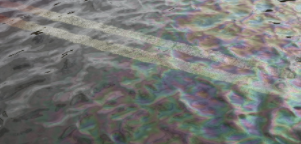
Image source: https://search.creativecommons.org/photos/d406b4e1-3f46-4d0e-a563-3ce956e8b5b7 by WarmSleepy
What is Petroleum?
Petroleum is an oily, thick, flammable, usually dark-coloured liquid. It is a type of bitumen or a combination of assorted hydrocarbons.
Fossil fuels take millions of years to build and thus petroleum is considered to be a non-renewable energy source. Petroleum is composed of hydrocarbons (a hydrocarbon may be a compound made of carbon and hydrogen) with the addition of other substances, principally sulphur. Petroleum, in its natural form and when first collected, is typically identified as crude oil. It might be clear, green or black and either thin like gasoline or thick like tar.

Image source: https://search.creativecommons.org/photos/a44b8e01-2d7e-4161-aa24-9f8142e43434
What is the difference between crude oil, petroleum products, and petroleum?
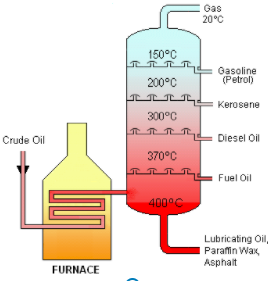
Image source: https://search.creativecommons.org/photos/9fa66afa-03f5-4ba6-bb5e-eb580b9cca0d by Users Psarianos, Theresa knott on en.wikipedia
Petroleum can be found in gaseous, liquid, or near-solid phases both alone or together. The liquid state is often called petroleum, while the more solid-state could also be called bitumen, tar, pitch, or asphalt. Occasionally, petroleum sediments elevated during the formation of mountain ranges. They are exposed by erosion to create tar deposits. Other near-surface deposits of liquid petroleum flow gradually to the surface through natural fissures within the overlying rock. Accumulations from these seeps, called crude oil, were used commercially within the 19th century to form kerosene by distillation. The majority of petroleum deposits lie confined inside the pores of natural rock at depths from 150 to 7,600 metres (500 to 25,000 feet) below the surface. Commonly, the deeper deposits have higher internal pressures and contain greater quantities of gaseous hydrocarbons.
History of Petroleum
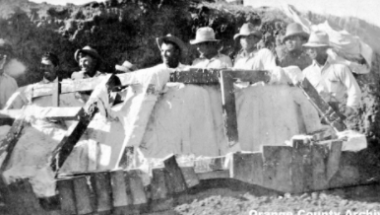
Image source: https://search.creativecommons.org/photos/0239a50b-b5fc-49f9-87d9-2a7c05f2967d by Orange County Archives
When it was discovered in the 19th century that rock oil would yield a distilled product (kerosene) suitable for lanterns, new sources of this mineral were eagerly sought. It is now generally agreed that the first well drilled specifically to find oil was that of Edwin Laurentine Drake in Titusville, Pa., U.S., in 1859. By the end of the century, the growing demand for petroleum products resulted in the expanse of oil well drilling in other states and countries. In 1900, crude oil stock globally was almost 150 million barrels. Half of this was produced in Russia, and 80 per cent of the rest was produced in the United States.
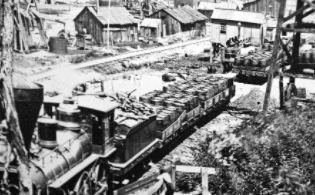
Image source: https://search.creativecommons.org/photos/7caa6dbd-a94e-4a45-a21e-3e270c6d1d61 by James St. John
The increase in automobile usage in the second decade of the 20th century produced a high demand for petroleum products. Yearly production exceeded one billion barrels in 1925 and two billion barrels in 1940. By the end of the 20th century, almost one million wells were dug in more than 100 countries producing more than 20 billion barrels annually. Petroleum is produced in every continent except Antarctica.
Leading Petroleum Consumers
1. United States
2. China
3. Japan
4. India
5. Saudi Arabia
Source: US Energy Information Administration
Leading Petroleum Producers
1. Saudi Arabia
2. Russia
3. United States
4. Iran
5. China
Source: U.S. Energy Information Administration
Proven Reserves
These nations have the world’s largest proven oil reserves.
1. Saudi Arabia
2. Venezuela
3. Canada
4. Iran
5. Iraq
Source: U.S. Energy Information Administration
Producing Oil
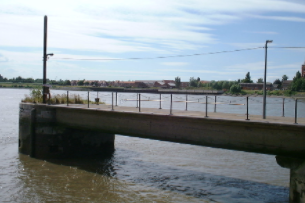
Image source: https://search.creativecommons.org/photos/484b0923-e20b-4634-823c-debf3acfe594 by LHOON
Exploration is still a risky business, even if research has improved since the first drilling days. Geologists examine underground rock formations to discover areas that might yield oil. Even with advanced systems, only about 44 of every 100 exploratory wells recover oil. When oil is found, a petroleum company brings in a 15 to 30-meter drilling rig and raises a derrick that houses the tools and pipes that go into the well. Today’s oil wells average 1800 meters deep and may sink below 6 km. The average well produces 11.3 barrels of oil a day.
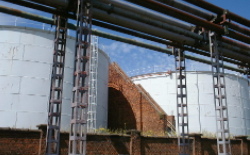
Image source: https://search.creativecommons.org/photos/b7e119bf-8543-4a5a-aef4-08eeaaf31195 by LHOON
For environment safety, oil drilling and oil production are regulated by state and federal governments. Oil companies must get permission to explore oil on new lands. Many experts believe that 85 per cent of our remaining oil reserves are on land owned by the federal government. Federal governments lease interested lands to oil companies that pay rent for the land and a percentage from each oil barrel.
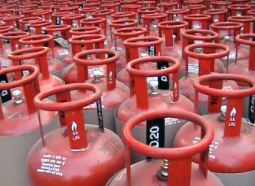
Image source: https://search.creativecommons.org/photos/2ccfaa30-df63-493c-8a70-fb93bc6225ef by Krish Dulal
Petroleum Products
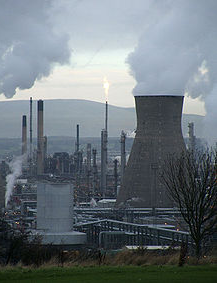
Image source: https://search.creativecommons.org/photos/8e144d2e-7daf-4697-949c-ddd1619097eb by User:John
Petroleum products are elements obtained from crude oil (petroleum). They are complex compounds, unlike petrochemicals, a collection of well-defined pure chemical compounds.
Refineries produce different percentages of these types of products; based on the composition of crude oil and the market demands. “Energy carriers” are the widest oil product share, which are various categories of fuel oil and gasoline. These fuels include jet fuel, diesel fuel, heating oil, and heavier fuel oils. Heavier (less volatile) fractions can also be used to fabricate asphalt, tar, paraffin wax, lubricating and others. Refineries also manufacture other substances, for example, some of which are applied in chemical processes to produce plastics. Other petroleum products can be elemental sulfur, carbon in petroleum coke form, and hydrogen. The hydrogen produced from crude oil is frequently applied as an intermediate product for other oil refinery means like hydrocracking and hydrodesulfurization.
Info source:
http://www.dictionary.com/browse/petroleum
https://en.m.wikipedia.org/wiki/Petroleum_product
https://www.nationalgeographic.org/encyclopedia/petroleum/
https://www.britannica.com/topic/petroleum-production
Please also visit: http://www.jbdesign.it/idesignpro
